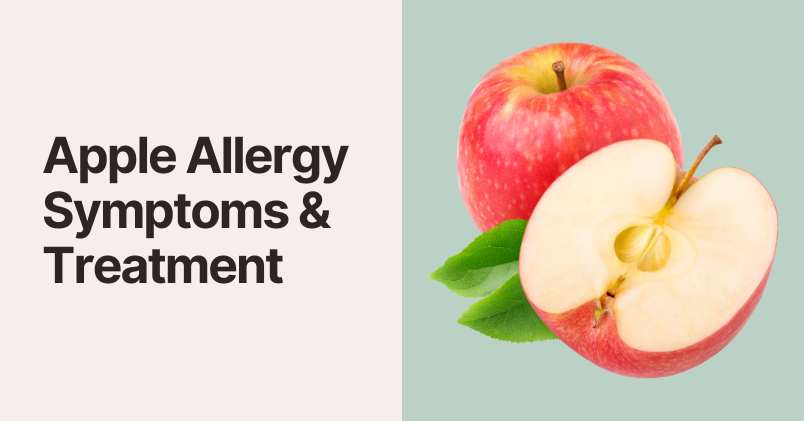Apple allergy is a type of oral allergy syndrome. The latter represents a group of allergies in the mouth to eating certain fresh fruits, nuts, and vegetables. This allergy occurs only when the fruit is eaten along with its skin. Pollen-fruit syndrome (PFS) is the most common type of apple allergy. It happens to people who are allergic to birch pollen. The apple’s skin contains birch pollen (fine to rough powder-like substance of seed plants) left on it, which causes an allergic reaction. Cooking the apple usually removes the proteins. People suffering from PFS can eat cooked apples that are cooked but with the doctor’s permission.

The other type of allergy is Primary Apple Allergy. This is a severe and very uncommon form of apple allergy. People with this type of allergy generally react to proteins not destroyed by cooking. These individuals cannot eat apples in any form, whether cooked or uncooked. Symptoms for these people range from skin reactions (like hives) to more severe reactions like anaphylaxis.
Facts about Apple Allergy
- Fruit allergies, such as that in apples, are generally linked with pollinosis (pollen allergies).
- In North and Central Europe, this sensitivity is due to birch pollen.
- In the Mediterranean region, it is linked with peach allergies.
- The allergy to apples depends on factors like cultivation methods, ripening stages, and storage conditions.
- Topaz, Elise, and Santana apple varieties are well tolerated by individuals suffering from this allergy. (Source)
- 30% of people suffering from birch pollen sensitivity also react to raw apples. (Source
- the allergy’s cause is still unclear and is called “contact urticaria syndrome.”
Apple Allergy Symptoms
The symptoms may vary from person to person depending on the extent of body sensitivity to pollens. However, they are mostly mild. Some of the top apple allergy symptoms are as follows:
- Itching of the mouth, lips, or tongue
- Swelling around the mouth and lips
- Tingling sensation in tongue and gums
- Redness or hives on the skin
- Stomach pain or cramping
- Diarrhea
- Nausea or vomiting
- Nasal congestion
- Wheezing or shortness of breath
- Nausea
- Runny nose
- Watery eyes
- Sneezing
- Hives (a kind of rash on the skin along with dark red color, raised and itchy bumps) in people susceptible to the pollens
- Dislike for apples may develop
- Bloody stools
People suffering from apple allergy are also sensitive to peaches and hazelnuts. If diarrhea and blood stools persist for over three days in adults and more than 24 hours in children, it’s time to seek the doctor’s help.
Radioallergosorbent test, or RAST test, is a type of blood test that finds the substance a person is allergic to. A skin prick test is also a diagnostic technique to determine the signs of this fruit allergy.
Apple Allergy Treatment
Some of the primary treatment options for apple allergy are:
- Anti-histamines are the prescribed drugs for treating apple allergy.
- Allergy shots or Immunotherapy is a treatment method for this allergy on a long-term basis.
- The best way to eliminate any allergy is to avoid the substance causing it and its sources.
- The chemical protein in the pollen in the powdered form, which causes the allergic reaction, completely loses its harmful qualities once the fruit is cooked, making it harmless for people sensitive to apple allergy.
